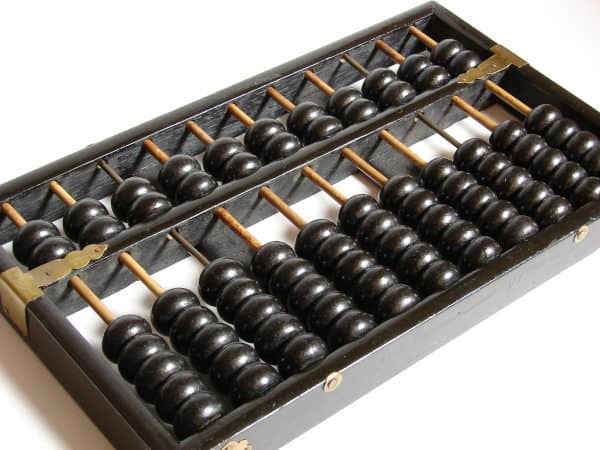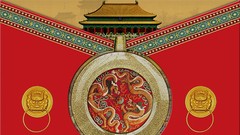
Though ancient people weren’t able to have the technology that we have today, they, however, were as innovative as we are right now. In China, for example, the idea of calculators, computers, and other computing machines had been seen in the earliest form of counting device they had (apart from the fingers people have), known to modern people as the abacus.
When was exactly abacus created?So for the record, the existence of Chinese abacus can be dated back to the 14 century A.D. And since the Chinese are known to relate their ways of like to their environment the attributes such as the top and bottom are considered heaven and earth respectively. What is an abacus actually made of?This form of computing device was created using wood and beads. Since the Chinese abacus was very handy, it was no surprise that it was successfully proliferated in other countries ever since they learn the power of the tool which was made out of simple yet very effective in doing arithmetic processes. The suànpán or the Chinese counting frame was a 20-centimeter in height and its width since it depends on the preference of the user. The typical suànpán had more than seven rods wherein two beads are on each rod in the higher deck and five beads in the bottom for decimal and hexadecimal calculation. How does Chinese abacus work?The counting of the beads or the computation is done by moving each bead in either an up or down manner towards the beam. You compute the value of something you are counting when you move the beads higher and you do not count the value when you move the beads down. More so in resetting the tool, the abacist or the abacus user executes a quick shaking of the suànpán along the horizontal axis to move all the beads away from the center of the horizontal beam. The truth is, suànpán was built to handle operations like division, addition, multiplication, subtraction, and even square root and cube root. This shows the concept that a simple idea can manifest complexities in its usage. Though it can not do what calculators do, it can serve its purpose in many ways like accounting for animals they killed and recording and storing details they gathered in computing. Click here to see some of our favorite Abacus designs.– Opens in new tab. More Interesting Facts to Know about the Chinese AbacusChinese are known as entrepreneurs and good traders, and these traits were seen in the similarity of the Roman abacus to suànpán which can possibly give us the idea that the trade relationship between China and Rome is as old as the existence of the abacus. The Chinese abacus had been “commercialized”, as what modern people can think of since it traveled to Korea and spread its influence in 1400 A.D. where it was called apparently different names such as jupan, supan, or jusan. |
Related reading: Innovation Through the Ages: Unraveling the Timeline of Chinese Inventions – Opens in new tab

How to Use an Abacus
Modern people are still fascinated with the idea that abacus can truly perform mathematical computations given the simple way it was created and the simple rationale behind its existence. Nonetheless, the simplicity of the idea of an abacus goes against the complexities it can execute. Though you can picture in your mind what an abacus looks like and how it works, the image you created, however, is already influenced by the fact that it is just an ordinary tool in computing when sometimes it’s not actually the case.
Abacuses are still used in other Asian countries like China and Japan despite the advent of more powerful calculators. The Chinese, however, are often recognized as the inventors and pioneers of the abacus, and such a claim credited to the abacus is the earliest calculating machine in the world. Given these facts, people couldn’t help themselves to learn how to use an abacus.
Mathematical calculations using abacus have representations that will help the user do the computation. Beads represent quantity while the beads’ position represents value. When you get an abacus you will notice that it is divided into two parts. Given an abacus with 13 rows of which there are five beads, then, the lower part contains four beads while the upper part has only one bead.
The first step: move all the beads to the bottom of the abacus by slanting it causing the beads to fall to the bottom. You will know that you did the proper thing when your abacus’ section which has five beads in every row is at the bottom section over the section that has one bead in each row. Now let us mark eight ones by pushing the upper section from the furthest right row or the one’s row and then position the three earth beads at the same row.
On the other hand, marking two tens would be done by pushing two earth beads from the next row or the ten’s row. Then, in marking hundreds, the heavenly part should be pushed to the third row or the hundred’s row and three earth beads to the similar row.
Moving on, the second number which is 25 should be added. The second number was computed by the two tens and then added with the 5 ones which were the remains on the second row of the heaven part. This number will be then split into 5 ones of different values. This brief example is just one method of using an abacus.
In using abacus the values of tens, ones, and hundreds are utilized for easy reference. You should remember that an abacus is a tool that challenges visualization in adding or subtracting and multiplying or dividing. The position and the value of each row may vary to meet the bigger numbers that the user will be dealing with.
Computing simple arithmetic with bigger values highlighted the reason behind the invention of the abacus. And to add more drama about abacus as you used it, try to remember that you are using a two-thousand-year-old computation tradition.
Click here to see some of our favorite Abacus designs.– Opens in new tab.
Online Courses about Chinese Culture from Udemy (Aff.link)

♦ If you liked this article, join our newsletter by using the forms on this website so we can stay in touch.
Feature Image from Depositphotos



